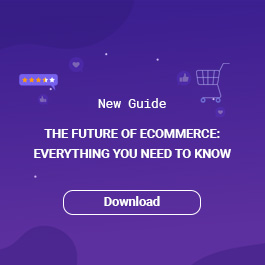Every week we collect some of the best web and digital design resources that will be useful for designers. Check out any of the links below and leave any comments about your favourites in the replies.
FREEBIES
Paul Grotesk: Modernist font-family

Paul Grotesk is a grotesque font family designed by Lukas Bischoff that comes in three free weights (thin, regular and bold). It is ideal for headlines, poster design, logotypes, etc. Download.
Bakery Website Template

A free PSD one page website template for bakeries designed and released by Malte Westedt, UI designer from Germany. Download.
100 Web Design Icons
A picture is worth a thousand words, or so they say. When it comes to icons, we’d definitely agree; and it follows that this colorful freebie from freepik.com is worth 100,000 words because it features 100, on-trend icons, free for use in both personal and commercial projects. Download.
Relate UI Kit: 45 Templates for Sketch and Photoshop

The design team at Invision just released another awesome free resource called Relate UI kit, a package for Sketch and Photoshop which includes 45 templates, 15 categories and more than 99 elements that may come in handy to create beautiful, high-fidelity prototypes. Download.
iOS 10 GUI kit for Sketch

This is another free iOS 10 resource for Sketch designed and released by Great Simple Studio, a team of talented designers from Russia. Download.
INSIGHT
The 3-Step Guide to Lightweight UX Documentation

Generalized documentation, created for no other purpose than to leave a paper trail, for example, is too general to be useful, and (effectively) purposeless. Highly focused documentation, on the other hand, can be both useful and purposeful.
Keep reading The 3-Step Guide to Lightweight UX Documentation
How to Design a Walkthrough That Users Will Read

If a new app is a new product, then the walkthrough is the instruction manual. A walkthrough appears when new users open an app for the first time. Your walkthrough should motivate users to read it so they’ll know how to use your app. You do this by using clear navigation cues and making your text scannable.
Keep reading How to Design a Walkthrough That Users Will Read
How to Design an Interface That’s Built for Speed

Is your website slow? Be honest. Could it be faster? Users demand websites that load quickly and continue to deliver content without lag. If your website falls the least bit behind in meeting this demand users could abandon your site (and they might never return).
Keep reading How to Design an Interface That’s Built for Speed
Some things can’t be wireframed

The grayscale box-and-line nature of wireframes discourages emotive design, eschewing it for hierarchy, structure, and logic. That’s correct when your goal is to deliver logical easy-to-follow experiences, but when you’re trying to make something fun, memorable, remarkable, or thoroughly engaging, it’s best to cast them aside.
Keep reading Some things can’t be wireframed
Key Principles of Mobile UX Design

The most important thing to keep in mind when designing a mobile app is to make sure it is both useful and intuitive. If the app is not useful, it has no practical value for user and no one has any reason to use it. If app is useful but requires a lot of time and effort, people won’t bother learning how to use it.
Keep reading Key Principles of Mobile UX Design
INSPIRATION
How we designed the Basecamp 3 app listing for Google Play

Your app store listing is a great marketing and support channel. Here’s how we approached the app page design for the Basecamp 3 Android app. I knew we had to have a video for our listing, but I wasn’t sure what type of video it would be.
Keep reading How we designed the Basecamp 3 app listing for Google Play
6 Essential Elements of Great Homepages

Have we forgotten about homepages? It seems as if every article on web design, content marketing, or CRO focuses on landing pages. While these pages are certainly important, your homepage is essentially the flagship of your website.
Keep reading 6 Essential Elements of Great Homepages
IBM Design Research

We’re not our users. An authentic focus on people begins with this simple acknowledgment.
Drive actionable user insights. Build continuous knowledge, discovery, and empathy. Understand through empirical observation, experience, and making.
Check out IBM Design Research


